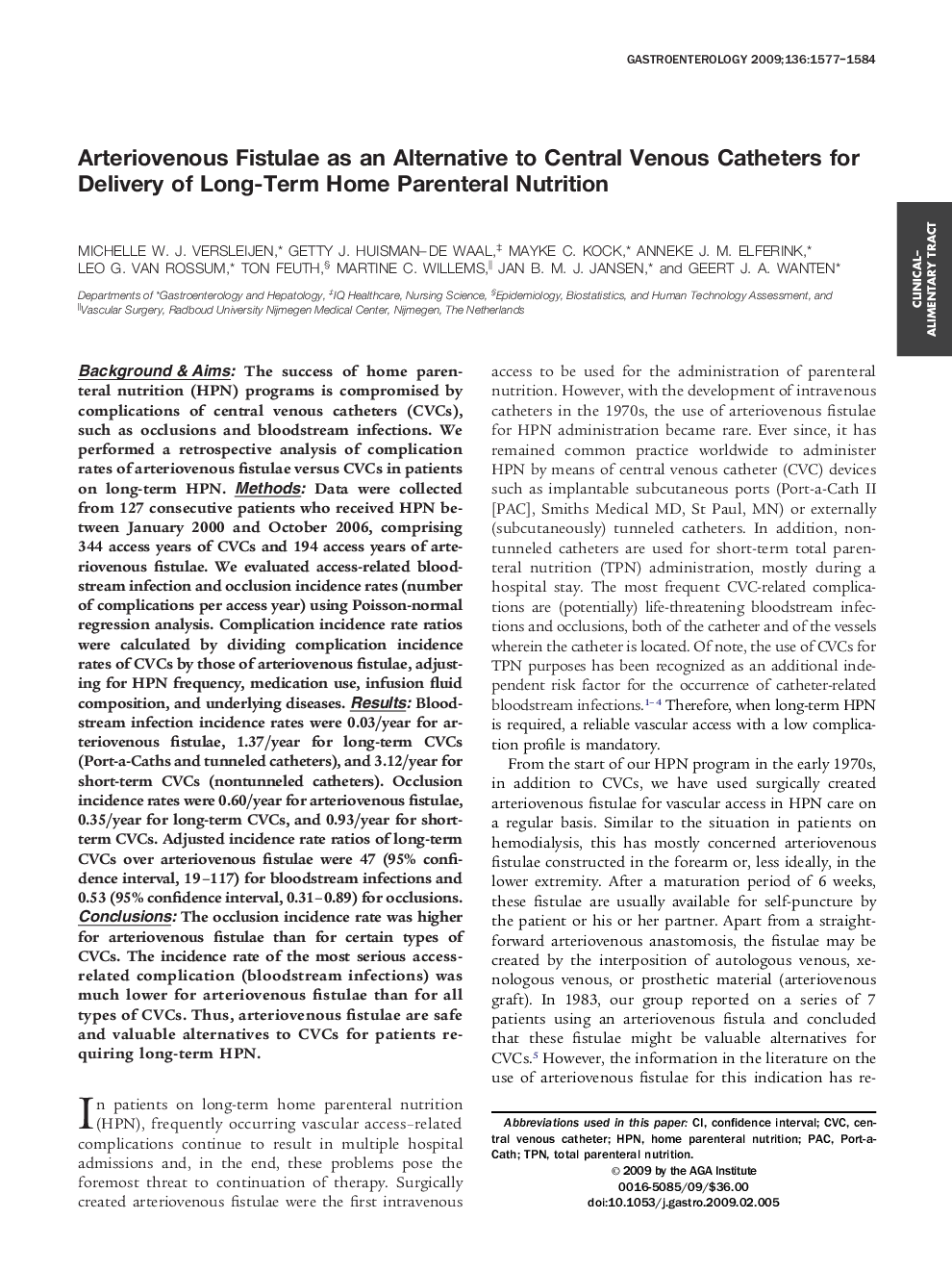| Article ID | Journal | Published Year | Pages | File Type |
|---|---|---|---|---|
| 3295080 | Gastroenterology | 2009 | 8 Pages |
Background & AimsThe success of home parenteral nutrition (HPN) programs is compromised by complications of central venous catheters (CVCs), such as occlusions and bloodstream infections. We performed a retrospective analysis of complication rates of arteriovenous fistulae versus CVCs in patients on long-term HPN.MethodsData were collected from 127 consecutive patients who received HPN between January 2000 and October 2006, comprising 344 access years of CVCs and 194 access years of arteriovenous fistulae. We evaluated access-related bloodstream infection and occlusion incidence rates (number of complications per access year) using Poisson-normal regression analysis. Complication incidence rate ratios were calculated by dividing complication incidence rates of CVCs by those of arteriovenous fistulae, adjusting for HPN frequency, medication use, infusion fluid composition, and underlying diseases.ResultsBloodstream infection incidence rates were 0.03/year for arteriovenous fistulae, 1.37/year for long-term CVCs (Port-a-Caths and tunneled catheters), and 3.12/year for short-term CVCs (nontunneled catheters). Occlusion incidence rates were 0.60/year for arteriovenous fistulae, 0.35/year for long-term CVCs, and 0.93/year for short-term CVCs. Adjusted incidence rate ratios of long-term CVCs over arteriovenous fistulae were 47 (95% confidence interval, 19–117) for bloodstream infections and 0.53 (95% confidence interval, 0.31–0.89) for occlusions.ConclusionsThe occlusion incidence rate was higher for arteriovenous fistulae than for certain types of CVCs. The incidence rate of the most serious access-related complication (bloodstream infections) was much lower for arteriovenous fistulae than for all types of CVCs. Thus, arteriovenous fistulae are safe and valuable alternatives to CVCs for patients requiring long-term HPN.
